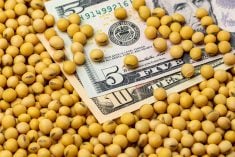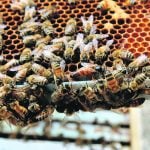Western Canadian feeder cattle prices were steady with week-ago levels. Auction market volumes remain quite high for this time of year; however, buying interest has subsided, with many feedlot operators comfortable with current numbers on feed heading into the New Year.
Colder temperatures also set a negative tone as buyers factor in a slightly higher death loss for lightweight calves.
It is not uncommon to see the feeder market soften by $5-$8 per hundredweight (cwt) during the last half of December. Feedlot workers are planning their holiday schedules and they don’t want to be caring for fresh cattle or processing over the holiday period.
Read Also

China rapeseed meal futures see largest one-day gain in almost three months after Xi–Carney talks
China’s most active Zhengzhou rapeseed (canola) meal futures posted their largest daily gain in nearly three months on Monday, after Canadian Prime Minister Mark Carney and Chinese President Xi Jinping met in South Korea last week without securing a breakthrough on tariffs.
Some deals were noted, such as 620-pound large-framed Charolais-cross steers, which sold for an equivalent $152/cwt landed in southern Alberta. Steers in the 800- to 900-lb. category averaged $138 in the same region.
Alberta packers bought slaughter cattle in the range of $115-$117/cwt, down $3-$5/cwt from a week earlier.
Good quality bred cows and bred heifers are up a solid $100 per head over the past month in Western Canada. Bred cows are now reaching upwards of $1,700 and I wouldn’t be surprised to see this market touch $1,900 by April.
U.S. feeder cattle prices were $2-$4 lower on average due to the lower futures market and softer beef wholesale prices. Certain regions of Texas have received moisture over the past few weeks and ranchers in this region are buying grass cattle and bred cows.
The buying activity of cattle producers in the U.S. southern Plains could have a large influence on the North American feeder market over the next two to three months.












